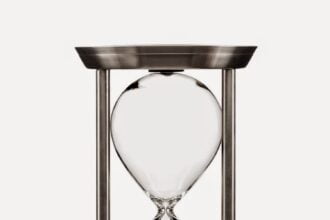 First published on MedCityNews.com. Children’s hospital leaders in Ohio recently brought to light an “unlimited supply” of unsolved problems in pediatrics that certainly isn’t going to solve itself.
First published on MedCityNews.com. Children’s hospital leaders in Ohio recently brought to light an “unlimited supply” of unsolved problems in pediatrics that certainly isn’t going to solve itself.
 First published on MedCityNews.com. Children’s hospital leaders in Ohio recently brought to light an “unlimited supply” of unsolved problems in pediatrics that certainly isn’t going to solve itself. In response, they and others have have increasingly turned to collaboration to bring new medical treatments to children.
First published on MedCityNews.com. Children’s hospital leaders in Ohio recently brought to light an “unlimited supply” of unsolved problems in pediatrics that certainly isn’t going to solve itself. In response, they and others have have increasingly turned to collaboration to bring new medical treatments to children.
In Ohio, six children’s hospitals have banded together under the Ohio Children’s Hospital Association, and one of their goals is to learn from each other in an area where they typically haven’t worked together — commercialization.
“Pediatrics is small, so if we want to trial a new product, if we want to study something, we typically don’t have enough numbers in one place to really get meaningful answers,” said Carrie Baker, director of public policy and advocacy at OCHA, at the annual meeting of trade group BioOhio last week. “But together, we have done some amazing things.”
Matt McFarland, director of the Office of Technology Commercialization at the Research Institute at Nationwide Children’s Hospital, pointed out that sometimes having such small populations is a boon to innovation. The FDA’s orphan designation program, for example, gives seven years of marketing exclusivity to companies that have drugs approved for conditions that affect fewer than 200,000 people. Other incentives like the Orphan Products Grants Program and fast track status have likely played into the growth of new drugs for rare diseases over the last decade and a half.
But it also means that the market for new innovations is acute, so there’s a big gap between the hospitals and the commercial sector, McFarland said. To bridge that gap, many of the OTC’s efforts at Nationwide have focused on de-risking technologies.
“We have money that we’ve set aside that we keep as dry powder for when we see one of these innovations come into our office that has potential but it needs worked out,” he said. “We’ve also invested in this bench-to-bedside infrastructure, if you will. I’m talking about the actual capabilities to manufacture your product for clinical trials, the ability to have infrastructure that engages with the FDA and guides your tem through the pre-IND and IND meetings.”
Funds are limited though, so McFarland said the spirit of bootstrapping is also key to getting projects off the ground. “You find yourself talking to companies, seeing if they’re willing to take some piece of equity in a new venture for that early prototype work,” he explained. “Or, is there a strategic relationship you can develop with a university who might have that engineering capability?”
Nicki Robinson, assistant vice president at the Cincinnati Children’s Center for Technology Commercialization, pointed to a potential next step in the process of spurring innovation through a global pediatric innovation center in Ohio. She mentioned a plan in response to a request for proposal recently released by Ohio’s Third Frontier Program that she expects the group will submit sometime next year.
“What we’ve been working on is a proposal that we will put in at some point that addresses this idea of a global pediatric innovation center […] that would take the unique assets that each one of our organizations bring to the table and really elevate that,” she explained. The idea includes three pieces: An early-stage, proof-of-concept development fund; a pediatric venture fund that would invest in pediatric startups in Ohio; and creating one point of entry for industry into many of the pediatric hospitals in the state.
These efforts aren’t unique to Ohio, of course. Children’s Hospital of Philadelphia formed a partnership with venture capital fund Osage University Partners earlier this year to fund the translation of research from bench to bedside. The Institute for Pediatric Innovation is a working consortium of four pediatric hospitals and several industry partners to advance development of new drugs and medical devices for children.
But improving childhood wellbeing stretches much further than funding for new products and collaboration among hospitals. It’s hard to improve outcomes without considering the role of government-sponsored child welfare, jobs and local developmental disabilities services, said Greg Moody, director of the Governor’s Office of Health Transformation.
“If those are connected to schools and care-providing partners, we have a real opportunity to knit together a package of services,” Moody said. “Why would the county boards not work directly with the local hospitals? You’re seeing the same child. What we’re working on now is […] how do you create an environment where that type of collaboration is the norm?”






